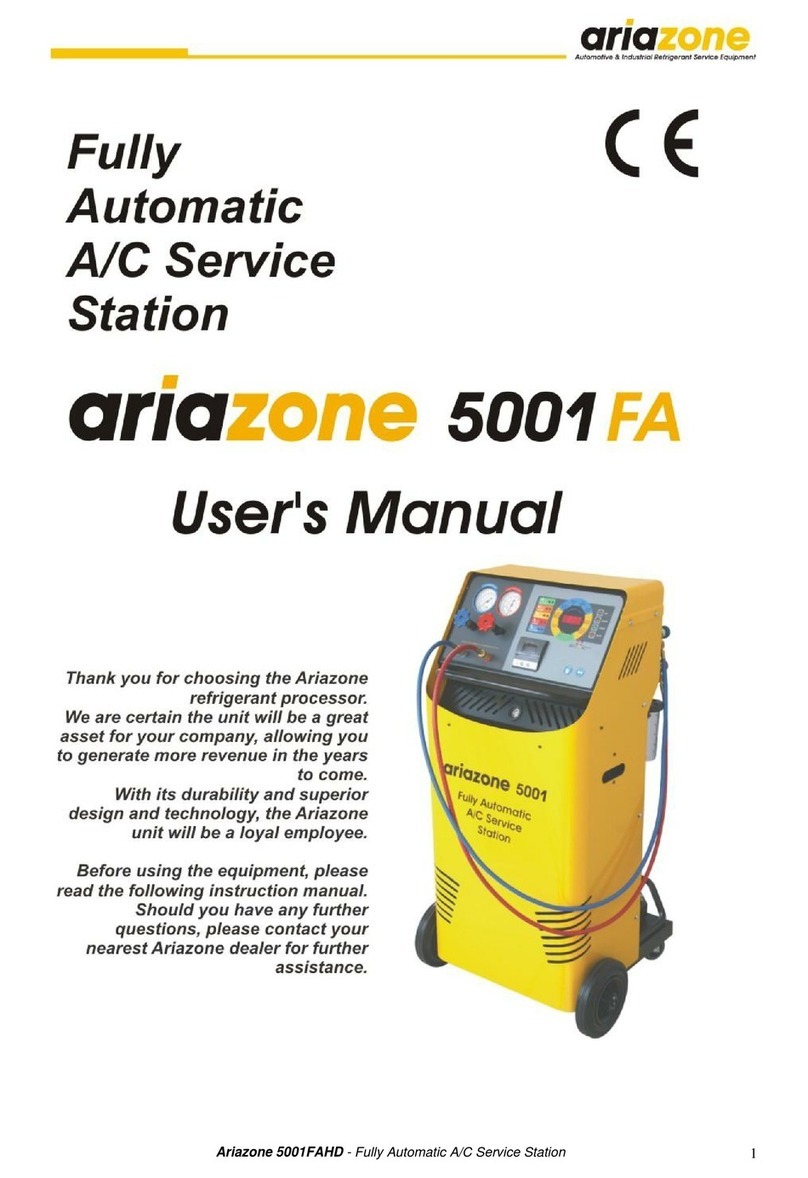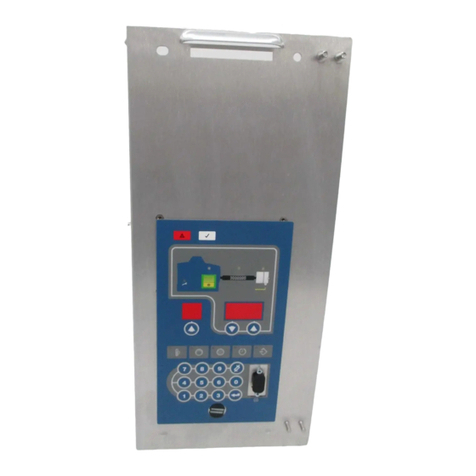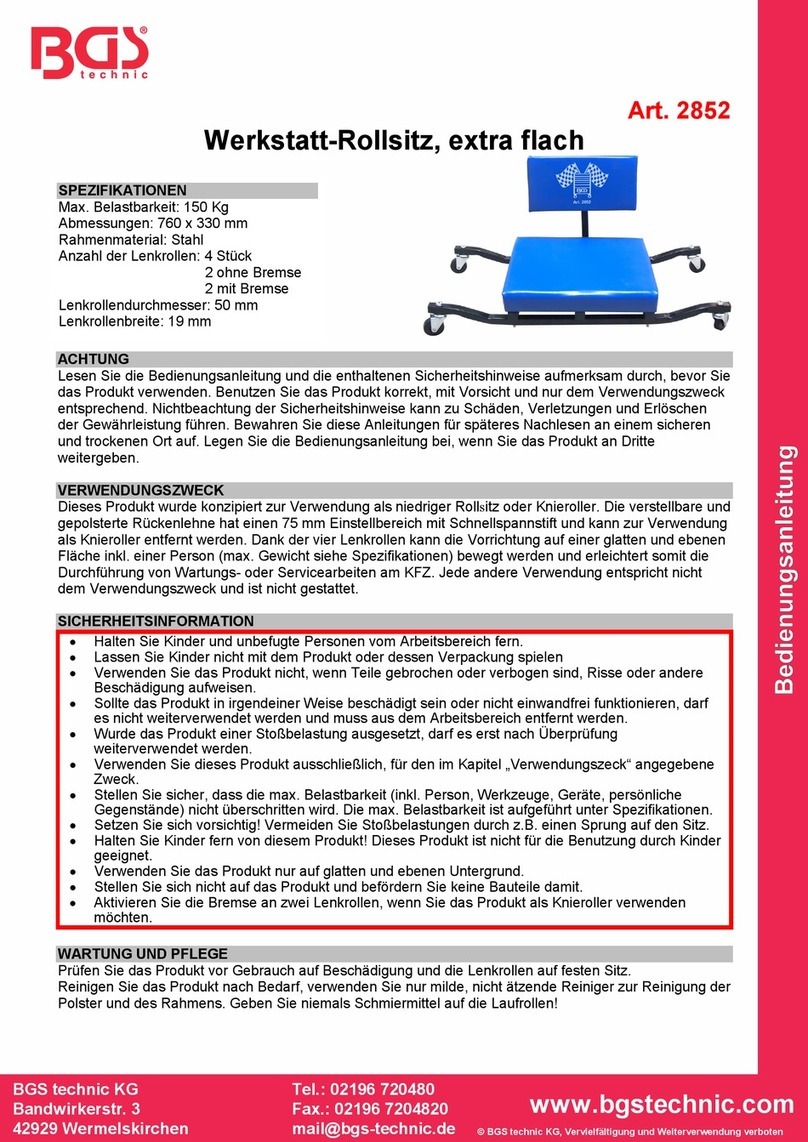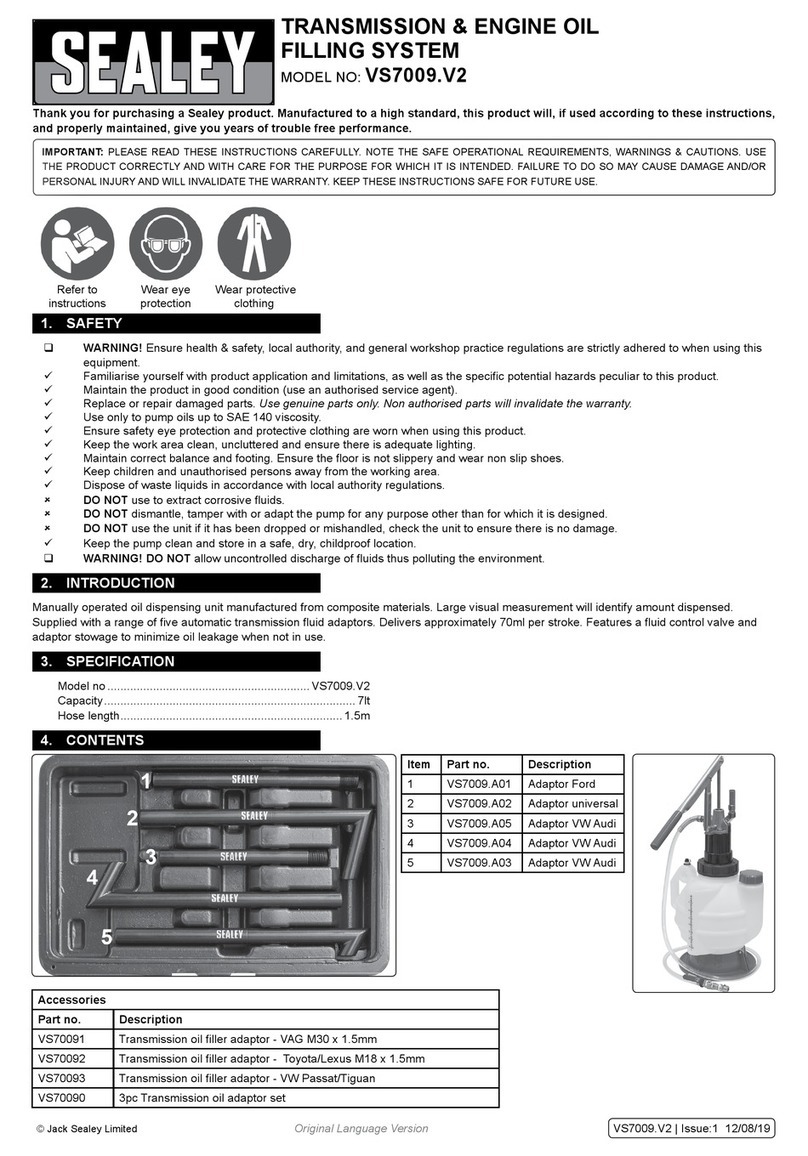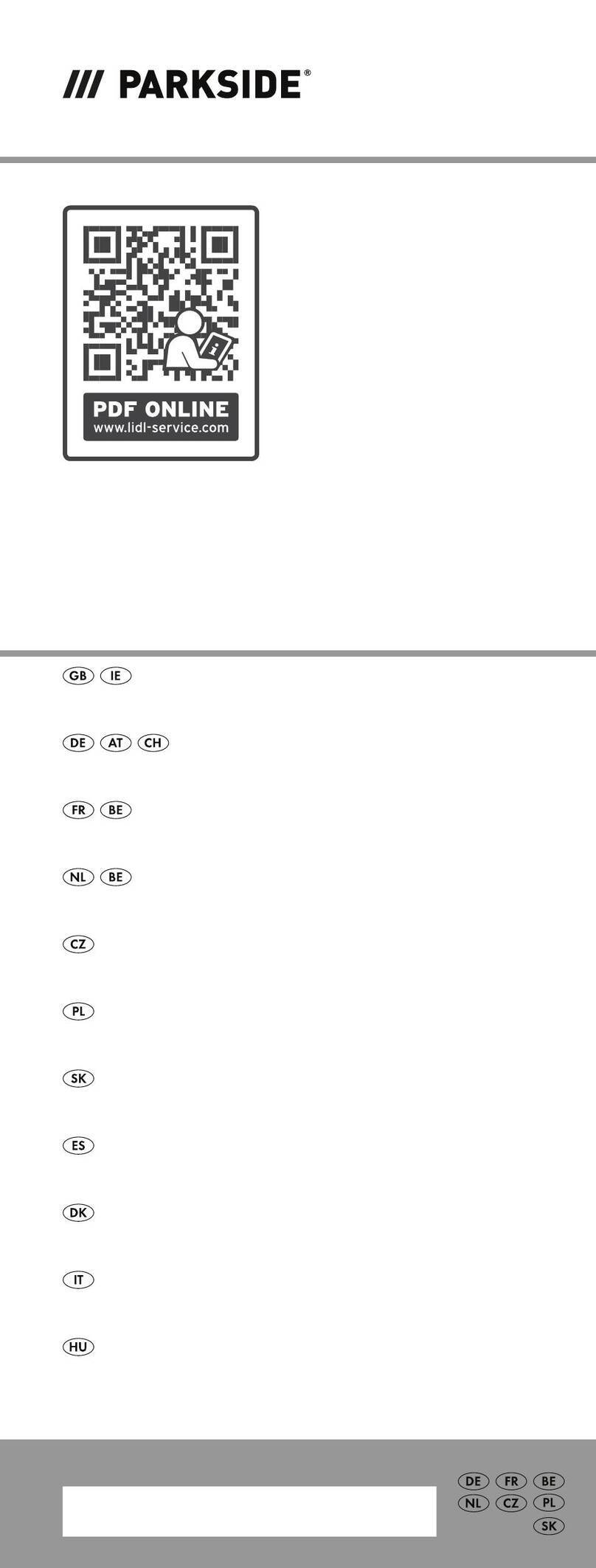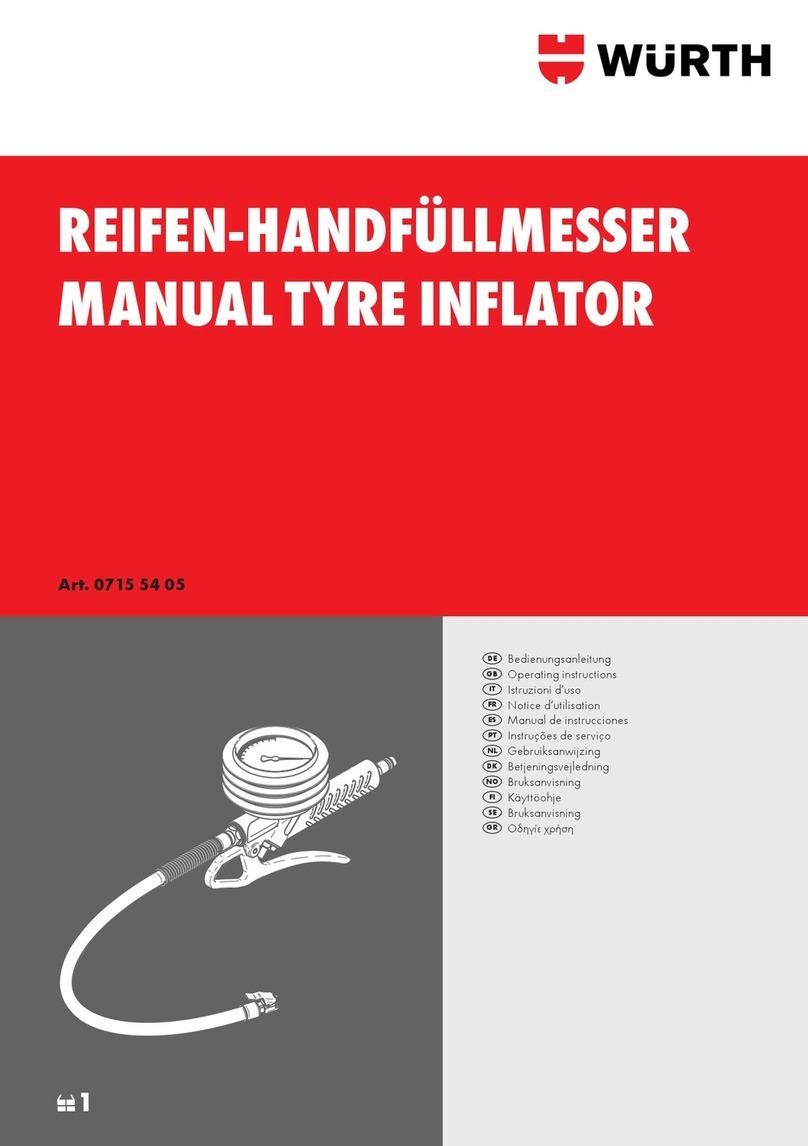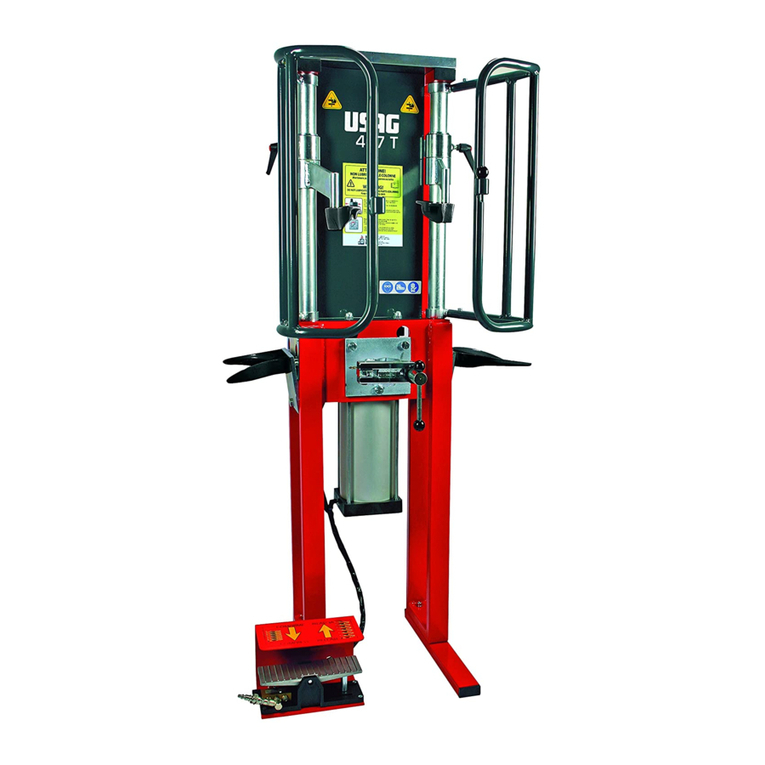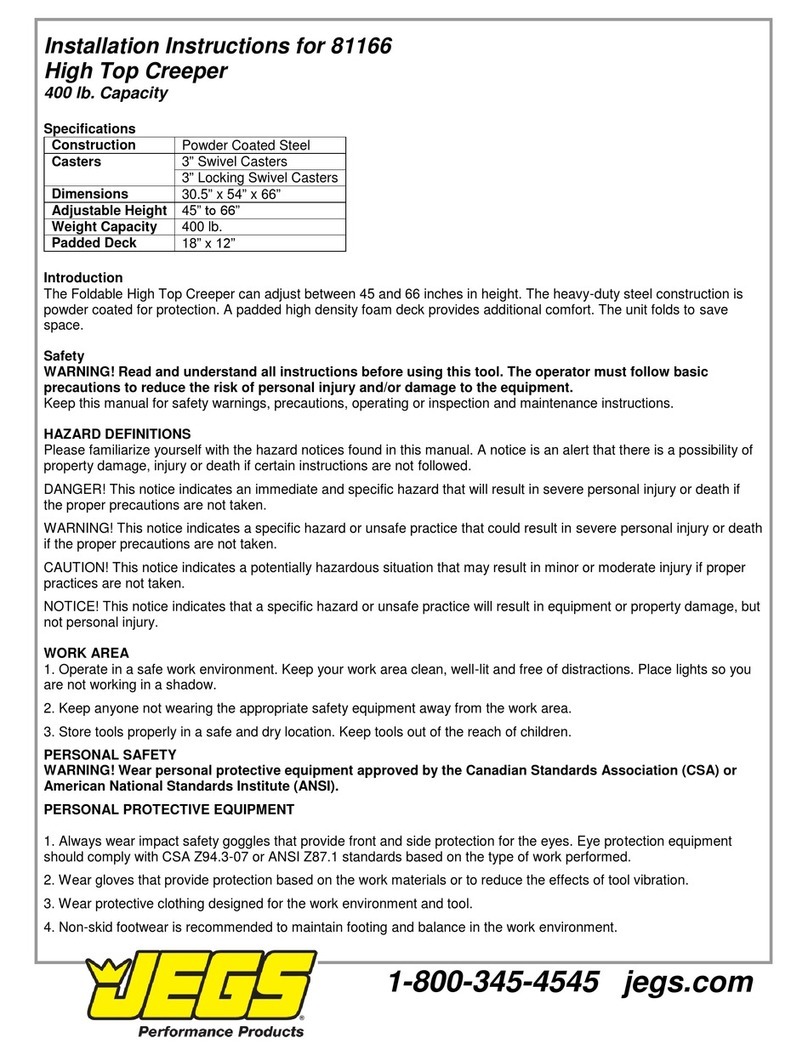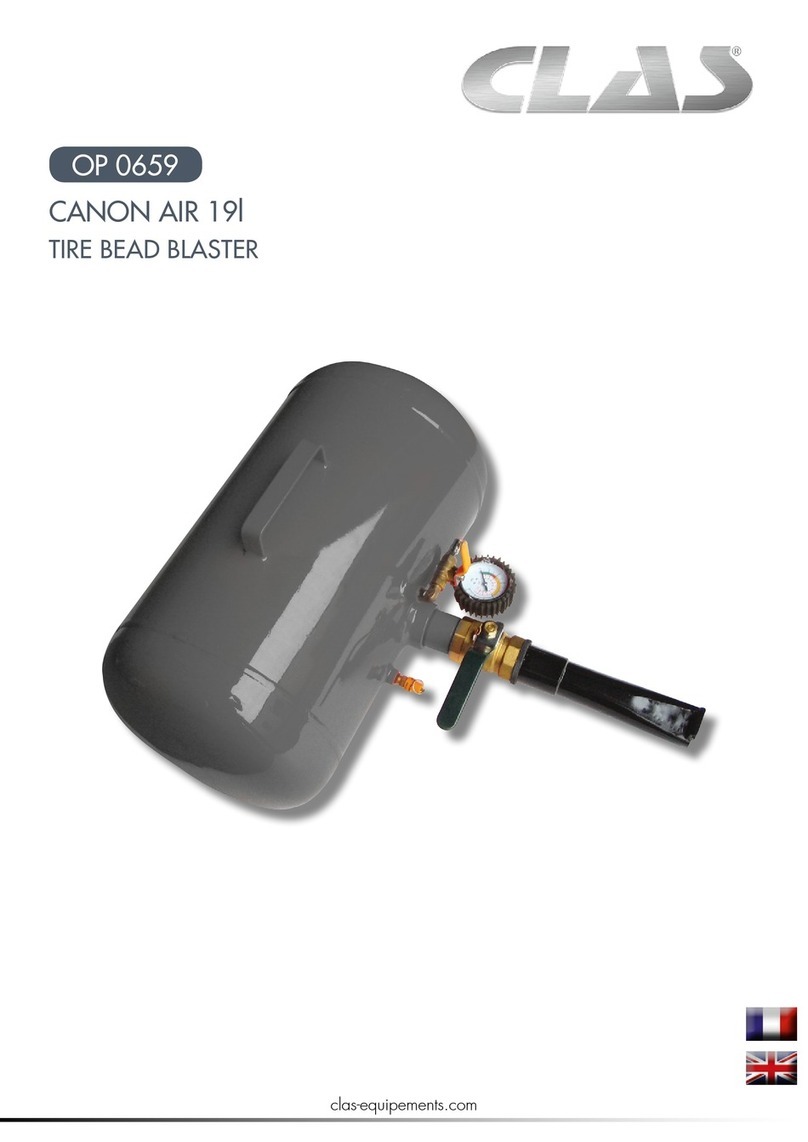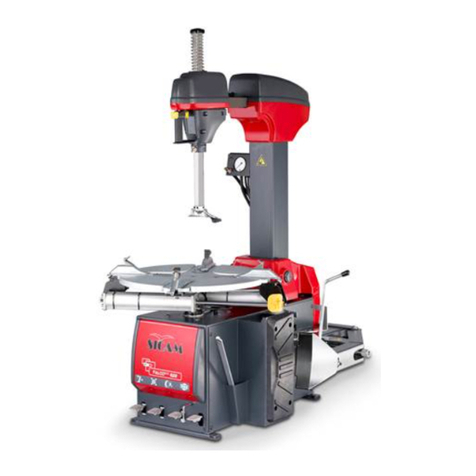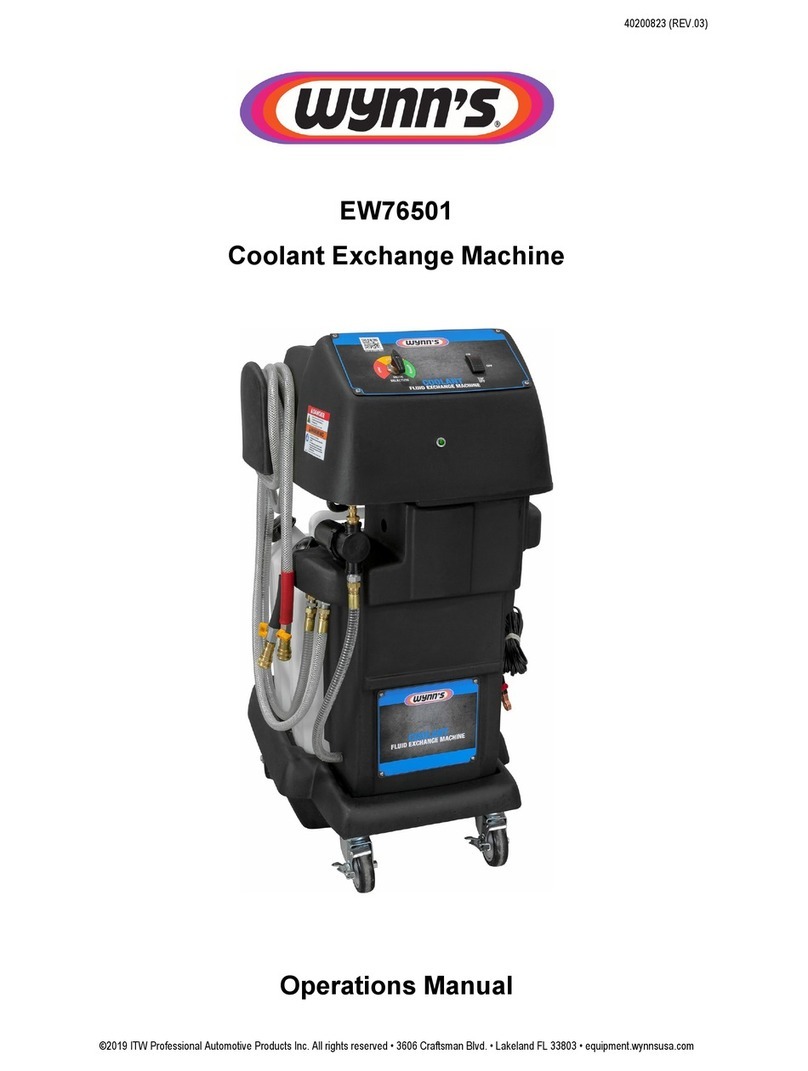IFR COM-120B User manual

MAINTENANCE
MANUAL
coM r 1208
COMMUNICATION SERUICE MONITOR
ffir=ETm
,E,E'.E.EiI
"E'E'Etril
'E,E'EtrII
m
IIEH
ll r-r R
lll.|?^rt I o
llt* lA
iltl
BJ
6-fiilI
t@l
I towrar I
[^-" I
6
^A-
,4=}
\-l
@
tm;l
@i
tr9tr
L-JEL
RF RECETVT IEFRY: REC.00
RF: UX-UU IiA
m -n mLST
l?UT:T/R ATTEII$dB
FFI-TER r0O Xllr
D€I(X)I FI
AT.|I,() / OATA FT.TER EET
AUTIIO / OATA OE}I OUT TET
rO}C/ DATACOOC:
I rlt RBCEIYEDGOOET
lF FREO(EI5Y: XXXX lt DEIORT|OIt XX- T
RF ERROR
(Avrrt .rrrtr
FI!p1ITd
-l 0+l
l-T,T--l
FIOfER
(F{) rr faT?r
oa
|-T-----_---r
ocvtlTprl
arEl rotEl
tAvnl
.tO 0 +tO
t f #T fuco*l2oB
t to c666666
ffiJ.' X;.,trj: #"^JE X-* r"^
10200 West York Street / Wichita, Kansas 67215 U.S.A. / (316) 5224981/ FAX (316) 524-2623
1002-060G,300
-
\'---_--11
MAINTENANCE
MANUAL
COM
-1208
COMMUNICATION
SERVICE
MONITOR
--
--
10200 West York Street / Wichita, Kansas 67215 U.S.A. / (316) 522-4981 / FAX (316) 524-2623
1002-0600-300

DIGITALY REMASTERED
OUT OF PRINT- MANUAL SCANS
By
Artek Media
18265 200th St.
Welch, MN 55089
www.artekmedia.com
“High resolution scans of obsolete technical manuals”
If your looking for a quality scanned technical manual in PDF format please visit
our WEB site at www.artekmedia.com or drop us an email at
manuals we have available.
If you don’t see the manual you need on the list drop us a line anyway we may
still be able to point you to other sources. If you have an existing manual you
would like scanned please write for details. This can often be done very
reasonably in consideration for adding your manual to our library.
Typically the scans in our manuals are done as follows;
1) Typed text pages are typically scanned in black and white at 300 dpi.
2) Photo pages are typically scanned in gray scale mode at 600 dpi
3) Schematic diagram pages are typically scanned in black and white at 600
dpi unless the original manual had colored high lighting (as is the case for
some 70’s vintage Tektronix manuals).
4) Most manuals are text searchable
5) All manuals are fully bookmarked
All data is guaranteed for life (yours or mine … which ever is shorter). If for ANY
REASON your file becomes corrupted, deleted or lost, Artek Media will replace
the file for the price of shipping, or free via FTP download.
Thanks
Dave & Lynn Henderson
Artek Media

PUBLISHED BY
IFR SYSTEMS INC
WICHITA, KANSAS
COPYRIGHT @ 1996 by IFR SYSTEMS, lNC.
All rights reserved. Printed in the United States of America. No part of this
publication may be reproduced, stored in a retrieval system, or transmitted in any form
or by any means, electronic, mechanical, photocopying, recording or otherwise without
the prior permission of the publisher.
PUBLISHED BY
IFR
SYSTEMS INC
WICHITA, KANSAS
COPYRIGHT
©
1996
by
IFR
SYSTEMS,
INC.
All
rights
reserved.
Printed
in
the
United
States
of
America.
No
part
of
this
publication
may
be
reproduced,
stored
in a
retrieval
system,
or
transmitted
in
any
form
or
by
any
means,
electronic,
mechanical,
photocopying,
recording
or
otherwise
without
the
prior
permission
of
the
publisher.

TABLE OF CONTENTS
SECTION .1 - CALIBRATION
1-1 GENERAL
1-1-1 SAFETY PRECAUTIONS
1-1-2 ESD PRECAUTIONS
1-2 TEST EQUIPMENT REQUIREMENTS
1-3 DISASSEMBLYREQUIREMENTS
1.4 CALIBRATION ADJUSTMENTS
1-5 CONTROLS, CONNECTORS AND INDICATORS
1-6 COMPLETION OF CALIBRATION TEST PROCEDURES
1-7 CALIBRATION RECORD
1.8 CALIBRATIONPROCEDURES
1-8-1 POWER SUPPLY CALIBRAT]ON
1-8-2 TCXO/OCXOCALIBRATION
1-8-3 DVM CALIBRATION
1-8-4 GENERATOR OUTPUT LEVEL CALIBRATION
1-8.5 DISTORTIONMETERCALIBRATION
1-8-6 SINAD METER CALIBRATION
1.8-7 RF GENERATE FM DEVIAT]ON CALIBRATION
1.8.8 RF GENERATE PM DEVIATION CALIBRATION
1-8-9 RF GENERATE AM MODULATION CALIBRATION
1-8-10 RF GENERATE EXTERNAL MODULATION CALIBRATION
1-8-11 SPECTRUM ANALYZER CALIBRATION
1-8-12 MIXER NULL CALIBRATION
1-8-13 FM DEVIATION METER CALIBRAT]ON
1-8-14 PM DEVIATION METER CALIBRATION
1.8.15 AM MODULATION METER CALIBRATION
1.8.16 POWER METER CALIBRATION
SECTION 2 - PC BOARDS AND SCHEMATICS
PRODUCT STRUCTURE 1ST LO ASSEMBLY
INTERCONNECT DIAGRAM 2ND LO ASSEMBLY
COMPOSITE ASSEMBLY 3RD LO ASSEMBLY
CASE ASSEMBLY BASE BAND ASSEMBLY
LID ASSEMBLY GENERATOR TRAY
FRONT PANEL ASSEMBLY AM FM MODULATOR ASSEMBLY
KEYBOARD CONTROLLER ASSEMBLY GEN CONVERTER ASSEMBLY
AUDIO BOARD ASSEMBLY ANALYZER ASSEMBLY
EL D]SPLAY INTERFACE ASSEMBLY POWER SUPPLY ASSEMBLY
ATTENUATOR CONTROL ASSEMBLY REFERENCE FREQ. STD.
POWER TERMINATION ASSEMBLY RECEIVER TRAY STD.
GENERATOR OUTPUT ASSEMBLY FRONT END BLOCK
MOTHERBOARD ASSEMBLY IF AMP/DEMOD ASSEMBLY
PCMCIA INTERFACE ASSEMBLY RECEIVER TRAY OPT. 03
VIDEO CNTR/FCTN GEN ASSEMBLY DIGITAL TRAY OPT. 04
CONTROLLER TRAY AUXILIARY AMP OPT. 05
SYNTHESIZER TRAY RECEIVER TRAY OPT. 08
TABLE
OF
CONTENTS
SECTION
1 -
CALIBRATION
1-1
GENERAL
1-1-1
SAFETY
PRECAUTIONS
1-1-2
ESD
PRECAUTIONS
1-2
TEST
EQUIPMENT
REQUIREMENTS
1-3
DISASSEMBLY
REQUIREMENTS
1-4
CALIBRATION
ADJUSTMENTS
1-5
CONTROLS,
CONNECTORS
AND
INDICATORS
1-6
COMPLETION
OF
CALIBRATION
TEST
PROCEDURES
1-7
CALIBRATION
RECORD
1-8
CALIBRATION
PROCEDURES
1
-8-1
1-8-2
1-8-3
1-8-4
1-8-5
1-8-6
1-8-7
1-8-8
1-8-9
1-8-10
1
-8-11
1
-8-12
1-8-13
1
-8-14
1
-8-15
1-8-16
POWER
SUPPLY
CALIBRATION
TCXOIOCXO
CALIBRATION
DVM
CALIBRATION
GENERATOR
OUTPUT
LEVEL
CALIBRATION
DISTORTION
METER
CALIBRATION
SINAD
METER
CALIBRATION
RF
GENERATE
FM
DEVIATION
CALIBRATION
RF
GENERATE
PM
DEVIATION
CALIBRATION
RF
GENERATE
AM
MODULATION
CALIBRATION
RF
GENERATE
EXTERNAL
MODULATION
CALIBRATION
SPECTRUM
ANALYZER
CALIBRATION
MIXER
NULL
CALIBRATION
FM
DEVIATION
METER
CALIBRATION
PM
DEVIATION
METER
CALIBRATION
AM
MODULATION
METER
CALIBRATION
POWER
METER
CALIBRATION
SECTION
2 -
PC
BOARDS
AND
SCHEMATICS
PRODUCT
STRUCTURE
INTERCONNECT
DIAGRAM
COMPOSITE
ASSEMBLY
CASE
ASSEMBLY
LID
ASSEMBLY
FRONT
PANEL
ASSEMBLY
KEYBOARD
CONTROLLER
ASSEMBLY
AUDIO
BOARD
ASSEMBLY
EL
DISPLAY
INTERFACE
ASSEMBLY
ATTENUATOR
CONTROL
ASSEMBLY
POWER
TERMINATION
ASSEMBLY
GENERATOR
OUTPUT
ASSEMBLY
MOTHERBOARD
ASSEMBLY
PCMCIA
INTERFACE
ASSEMBLY
VIDEO
CNTR/FCTN
GEN
ASSEMBLY
CONTROLLER
TRAY
SYNTHESIZER
TRAY
1
ST
LO
ASSEMBLY
2ND
LO
ASSEMBLY
3RD
LO
ASSEMBLY
BASE
BAND
ASSEMBLY
GENERATOR
TRAY
AM
FM
MODULATOR
ASSEMBLY
GEN
CONVERTER
ASSEMBLY
ANALYZER
ASSEMBLY
POWER
SUPPLY
ASSEMBLY
REFERENCE
FREQ.
STD.
RECEIVER
TRAY
STD.
FRONT
END
BLOCK
IF
AMPIDEMOD
ASSEMBLY
RECEIVER
TRAY
OPT.
03
DIGITAL
TRAY
OPT.
04
AUXILIARY
AMP
OPT.
05
RECEIVER
TRAY
OPT.
08
Scans by ArtekMedia © 2008

SECTION 1 . CALIBRATION
1 .1 G EN ERAL
This section contains calibration procedures for the following assemblies and systems:
PARA TITLE PAGE
1-8-1
1-8-2
1-8-3
1-B-4
1-8-5
1-8-6
1-8-7
1-8-8
1-8-9
1-8-10
1-8-1 1
1-8-12
1-8-13
1-8-14
1-8-15
1-8-16
These
POWER SUPPLY CALIBRATlON
TCXO/OCXO CALIBRATION
DVM CALIBRATION
GENERATOR OUTPUT LEVEL CALIBRATION
DISTORTION METER CALlBRATION
SINAD METER CALIBRATION
RF GENERATE FM DEVIATION CALIBRAT]ON
RF GENERATE PM DEVIATION CALIBRAT]ON
RF GENERATE AM MODULATION CALIBRATION
RF GENERATE EXTERNAL MODULATION CALIBRATION
SPECTRUM ANALYZER CALIBRATION
MIXER NULL CALIBRATION
FM DEVIATION METER CALIBRATION
PM DEVIATION METER CALIBRATION
AM MODULATION METER CALIBRATION
POWER METER CALIBRATION
1-5
1-7
1-9
1-1 1
1-14
1-16
1-18
1-21
1-23
1-25
1-29
1-36
1-38
1-41
1-43
1-45
procedures should be performed as a result of one or more of the following conditions:
O lf, during the course of normal operation, the COM-1208 or any major function thereof
fails to meet the performance specifications.
O lf a module is found to be defective and requires replacement.
O lf the recommended 12 month calibration interval is due.
Figure 1-1 lists the calibration procedures required based on the replacement of a specific
module. All procedures must be performed for the annual calibration.
1-1-1 SAFETY PRECAUTIONS
As with any piece of electronic equipment, extreme caution should be taken when working with
'live" circuits. When performing the calibration procedures in this section, be sure to observe
the f ollowing precautions:
WARNING: REMOVE ALL JEWELRY BEFORE PERFORMING ANY CALIBRATION
PROCEDURES INVOLVING LIVE CIRCUITS.
HEED ALL WARNINGS AND CAUTIONS CONCERNING MAXIMUM VOLTAGES
AND POWER INPUTS.
1-1
SECTION
1 -
CALIBRATION
1-1
GENERAL
This
section
contains
calibration
procedures
for
the
following
assemblies
and
systems:
PARA
1-8-1
1-8-2
1-8-3
1-8-4
1-8-5
1-8-6
1-8-7
1-8-8
1-8-9
1-8-10
1
-8-11
1-8-12
1-8-13
1-8-14
1-8-15
1-8-16
TITLE
POWER
SUPPLY
CALIBRATION
TCXOIOCXO
CALIBRATION
DVM
CALIBRATION
GENERATOR
OUTPUT
LEVEL
CALIBRATION
DISTORTION
METER
CALIBRATION
SINAD
METER
CALIBRATION
RF
GENERATE
FM
DEVIATION
CALIBRATION
RF
GENERATE
PM
DEVIATION
CALIBRATION
RF
GENERATE
AM
MODULATION
CALIBRATION
RF
GENERATE
EXTERNAL
MODULATION
CALIBRATION
SPECTRUM
ANALYZER
CALIBRATION
MIXER
NULL
CALIBRATION
FM
DEVIATION
METER
CALIBRATION
PM
DEVIATION
METER
CALIBRATION
AM
MODULATION
METER
CALIBRATION
POWER
METER
CALIBRATION
PAGE
1-5
1-7
1-9
1-11
1-14
1-16
1-18
1-21
1-23
1-25
1-29
1-36
1-38
1-41
1-43
1-45
These
procedures
should
be
performed
as
a
result
of
one
or
more
of
the
following
conditions:
•
If,
during
the
course
of
normal
operation,
the
COM-120B
or
any
major
function
thereof
fails
to
meet
the
performance
specifications.
•
If
a
module
is
found
to
be
defective
and
requires
replacement.
•
If
the
recommended
12
month
calibration
interval
is
due.
Figure
1-1
lists
the
calibration
procedures
required
based
on
the
replacement
of
a
specific
module.
All
procedures
must
be
performed
for
the
annual
calibration.
1-1 -1
SAFETY
PRECAUTIONS
As
with
any
piece
of
electronic
equipment,
extreme
caution
should
be
taken
when
working
with
"live"
circuits.
When
performing
the
calibration
procedures
in
this
section,
be
sure
to
observe
the
following
precautions:
WARNING:
REMOVE
ALL
JEWELRY
BEFORE
PERFORMING
ANY
CALIBRATION
PROCEDURES
INVOLVING
LIVE
CIRCUITS.
HEED
ALL
WARNINGS
AND
CAUTIONS
CONCERNING
MAXIMUM
VOLTAGES
AND
POWER
INPUTS.
1
-1

1-1-2 ESD PRECAUTIONS
CAUTION: THESE CALIBRATION PROCEDURES SHOULD ONLY BE PERFORMED lN AN ESD
ENVIRONMENT AND ALL PERSONNEL PERFORMING THIE PROCEDURES
SHOULD KNOW ACCEPTED ESD PRACTICES OR BE ESD CERTIFIED.
fi cAU'oN t?
L.--r \t/
ll
THIS EQUIPMENT CONTAINS PARTS
SENSIT]VE TO DAMAGE
BY ELECTROSTATTC DTSCHARGE (ESD)
1.2 TEST EOUIPMENT REQUIREMENTS
Table 1-1 contains a comprehensive list of test equipment suitable for performing any of the
procedures listed in this manual. Any other equipment meeting the specifications listed in
Table 1-1 may be substituted in place of the recommended models.
NOTE: For certain procedures contained in this manual, the equipment listed in Appendix A may
exceed the minimum required specif ications.
1.3 DISASSEMBLY REQUIREMENTS
To perform the calibration procedures, the case assembly must be removed.
1.4 CALIBRATION ADJUSTMENTS
Before making adjustments, always observe the measurement. lf the measurement is within the
tolerances given, do not proceed with the adjustment. When an adjustment is required, attempt
to obtain a precise measurement, instead of just within tolerance.
1.5 CONTROLS, CONNECTORS AND INDICATORS
The front and rear panel controls, connectors and indicators specified in the calibration
procedures are followed by an item number. Refer to Figures 3-1 and 3-2 in the COM-1208
Operation Manual for the location of these items.
1.6 COMPLETION OF CALIBRATION TEST PROCEDURES
Upon completion of a specific calibration procedure, the calibration procedure may be
terminated. Control settings, operating commands and test equipment do not carry over from
one procedure to another and are not assumed at the beginning of a procedure.
1.7 CALIBRATION RECORD
A Calibration Record is provided for recording the results obtained while performing the
Calibration Procedures. lt is recommended the technician reoroduce the Calibration Record.
rather than use the copy in this manual.
1-2
1-1-2
ESD
PRECAUTIONS
CAUTION:
THESE
CALIBRATION
PROCEDURES
SHOULD
ONLY
BE
PERFORMED
IN AN
ESD
ENVIRONMENT
AND
ALL
PERSONNEL
PERFORMING
THIE
PROCEDURES
SHOULD
KNOW
ACCEPTED
ESD
PRACTICES
OR BE
ESD
CERTIFIED.
\.~
CAUTION
THIS EQUIPMENT CONTAINS PARTS
SENSITIVE
TO
DAMAGE
BY
ELECTROSTATIC DISCHARGE (ESD)
1-2
TEST
EQUIPMENT
REQUIREMENTS
Table
1-1
contains
a
comprehensive
list
of
test
equipment
suitable
for
performing
any
of
the
procedures
listed
in
this
manual.
Any
other
equipment
meeting
the
specifications
listed
in
Table
1-1
may
be
substituted
in
place
of
the
recommended
models.
NOTE:
For
certain
procedures
contained
in
this
manual,
the
equipment
listed
in
Appendix
A
may
exceed
the
minimum
required
specifications.
1-3
DISASSEMBLY
REQUIREMENTS
To
perform
the
calibration
procedures,
the
case
assembly
must
be
removed.
1-4
CALIBRATION
ADJUSTMENTS
Before
making
adjustments,
always
observe
the
measurement.
If
the
measurement
is
within
the
tolerances
given,
do
not
proceed
with
the
adjustment.
When
an
adjustment
is
required,
attempt
to
obtain
a
precise
measurement,
instead
of
just
within
tolerance.
1-5
CONTROLS,
CONNECTORS
AND
INDICATORS
The
front
and
rear
panel
controls,
connectors
and
indicators
specified
in
the
calibration
procedures
are
followed
by
an
item
number.
Refer
to
Figures
3-1
and
3-2
in
the
COM-120B
Operation
Manual
for
the
location
of
these
items.
1-6
COMPLETION
OF
CALIBRATION
TEST
PROCEDURES
Upon
completion
of
a
specific
calibration
procedure,
the
calibration
procedure
may
be
terminated.
Control
settings,
operating
commands
and
test
equipment
do
not
carryover
from
one
procedure
to
another
and
are
not
assumed
at
the
beginning
of
a
procedure.
1-7
CALIBRATION
RECORD
A
Calibration
Record
is
provided
for
recording
the
results
obtained
while
performing
the
Calibration
Procedures.
It is
recommended
the
technician
reproduce
the
Calibration
Record,
rather
than
use
the
copy
in
this
manual.
1-2
Scans by ArtekMedia © 2008

Type Model Specif icatlons
Digital Multimeter (DMM) HP34401A or equivalent
Calibrator Fluke 5100B or equivalent
Audio Analyzer HP8903B or equivalent Frequency Range:
20 Hz to 20 kHz
Accu racy
r0.1 dB
Frequency Counter Phillips PM6669
or equivalent Frequency:
'lO Hz to 1.3 GHz
Reso lution :
>7 digits
Measuring Receiver
HP8902A (opt. 30, 32,371
or equivalent RF Power:
-20 to +30 dBm
RF Power Range:
.1 to 1 GHz
RF Level:
Tuned 0 to -127 dBm
RF Power Accuracy:
10.1 dB
Measuring Receiver Sensor HP11722A or equivalent
Modulation Analyzer
HP8901A or equivalent FM Meter Range:
20 Hz to 200 kHz
FM Meter Accuracy:
t1% t1 digit
Phase Meter Range:
to 200 Radians
Phase Meter Accuracy:
t3"/" t1 digit
10 MHz Standard Accu racv:
t2 X 10-e
(Traceable to NIST)
COM-120 Maintenance Kit P/N 7001-8743-800
Signal Generator HP8657A or equivalent
10 W RF Amplif ier Amplifier Research
10w1000
or equivalent
Gain:
40 dB Nominal
Bandwidth:
1 MHz to 1 GHz
200 W RF Amplifier ENI 5100L or equivalent Gain:
50 dB Nominal
Bandwidth:
1.5 to 150 MHz
Table 1-1 Test Equipment Requirements
Type
Model
Specifications
Digital
Multimeter
(DMM)
HP34401
A
or
equivalent
Calibrator
Fluke
5100B
or
equivalent
HP8903B
or
equivalent
Frequency
Range:
Audio
Analyzer
20
Hz
to
20
kHz
Accuracy
±0.1
dB
Phillips
PM6669
Frequency:
Frequency
Counter
or
equivalent
10Hzt01.3GHz
Reso
luti
on:
~7
digits
HP8902A
(opt.
30,
32,
37)
RF
Power:
or
equivalent
-20
to
+30
dBm
RF
Power
Range:
Measuring
Receiver
.1t01GHz
RF
Level:
Tuned
0
to
-127
dBm
RF
Power
Accuracy:
±0.1
dB
Measuring
Receiver
Sensor
HP11722A
or
equivalent
HP8901
A
or
equivalent
FM
Meter
Range:
20
Hz
to
200
kHz
FM
Meter
Accuracy:
Modulation
Analyzer
±1 % ±1
digit
Phase
Meter
Range:
to
200
Radians
Phase
Meter
Accuracy:
±3%
±1
digit
Accuracy:
10
MHz
Standard
±2
X
10-
9
(Traceable
to
NIST)
COM-120
Maintenance
Kit
PIN
7001-8743-800
Signal
Generator
HP8657A
or
equivalent
Amplifier
Research
Gain:
10
W RF
Amplifier
10W1000
40
dB
Nominal
or
equivalent
Bandwidth:
1
MHz
to
1
GHz
ENI
51
OOL
or
equivalent
Gain:
200
W
RF
Amplifier
50
dB
Nominal
Bandwidth:
1.5t0150MHz
_._-
-------~-.---
-. _
...
-------
----
-----~.-
Table
1-1
Test
Equipment
Requirements
Scans by ArtekMedia © 2008

THE
FOLLOWING
a:
I
a: a: a:
I
z W W W I
CALIBRATION
z I
~
W Z N l- I- Z
0
...J
I- z
a:z
wZz
wZz
wOz
wOz
~Z
Wz
Wz
o Z !
a:
Z
PROCEDURES
o..Z
OZ
i=
a:wz
...J
z
o..Q
xQ
0>0
Wo
wo
~Qo
~Qo
1--0
~i=0
«Q
...Jo
::EO
::EO
i=
0
Wo
IF
THIS
«
::E-
«~-
1--
MUST
BE
I-w-
1--
a:1-i= a:1-i=
a:~i=
~~
::J-
zi= zi=
~a:i=
~~
::J~
O~
0::
«...J~
Zl-
w~
0::
I-
Z~
ASSEMBLY
IS
PERFORMED
co
0«
w~«
w~«
w::J«
w::J«
O<t
0«
::J
w«
f/)o::
Qo::
:::::i
O::I-a: _0::
::Ea:
z>a:
z>a:
zOO::
zoO::
::EO::
0::0::
-0::
-a:
otiio::
a:
0::
REPAIRED
OR
\..
a:
co
Oco « W::Jco
I-CO
oco
wwco wwco wOco
woco
::J!!!
WCO
I-co I-co O::E!!! w!!!
w-
x-
zo..-
o:::::::i
«-
(!)O:::::i (!)O:::::i
(!)::E:::::i
X:::::i
«-
«-
REPLACED
~~
0...J 0 wl-...J z...J
(!)::E:::::i
0::...J
-...J -...J
::E
~
~...J
•
1-«
(!)::J«
0«
-«
u..::E« u..::E«
~::E(3
u..!><<(
1-«
-«
>« >«
0«
00
0
::E
0°
1-0
000
a:u.. 0
0::0..
0
0::
0
00
::EO
Wo
Wo
::E
0 0.. 0
0..
>
~
0 0
0 « W w
::E ::E
«
0 0..
f/)
u..
0..
1-8-1
1-8-2 1-8-3 1-8-4 1-8-5 1-8-6 1-8-7 1-8-8 1-8-9 1-8-10
1-8-11
1-8-12 1-8-13 1-8-14 1-8-15 1-8-16
•
MOTHERBOARD
PC
BOARD
ASSEMBLY
ATTENUATOR
CONTROL
PC
BOARD
ASSEMBLY
f--------
"---
I--------~---
f----------
---------
--
FRONT
PANEL
ASSEMBLY
DIGITAL
TRAY
•
CONTROLLER
TRAY
ANAL
VZER
TRAY
• •
RECEIVER
TRAY
• • •
SYNTHESIZER
TRAY • • • • • • • • • • • • •
GENERATOR
TRAY
• • • • •
POWER
TERMINATION
ASSEMBLY
•
GENERATOR
OUTPUT
ASSEMBLY
• • • • •
CONVERTER
ASSEMBLY
• • • • • •
REFERENCE
FREQUENCY
ASSEMBLY
•
FAN
ASSEMBLY
POWER
SUPPLY
ASSEMBLY
• • • • • • • • • • • • • • • •
8702001
Figure
1-1
Module
Replacement
and
Calibration
Requirements
•
1-4
Scans by ArtekMedia © 2008

1.8 CALIBRATION PROCEDU RES
1-8-1 POWER SUPPLY CALIBRATION
PREREQUISITES: NONE
EQUIPMENT REOUIRED: 1 Dlc|TAL MULTTMETER (DMM)
FIG URES: 1-2
STEP PROCEDURE
1. Apply Power to COM-12O8. Ailow 30 minute warm-up period.
2. Verify Voltages at Motherboard Connector 87A6J10 per Table 1-2 using DMM. Refer to
Figure 1-2 tor pin locations. Use Chassis f or ground.
Supply Voltage Locatlon
+13 V+13 Vdc (10.25 V) 8746J10 PtN 1.13
+35 V+35 Vdc (t1 V) 87A6J10 PtN 2.14
10.5 V-10.5 Vdc (t0.5 V) 8746J10 PtN 3.15
+10.5 V+10.5 Vdc (10.25 V) 87A6J10 PIN 4.16
+5 V Analog +5 Vdc (+0.2 V/-0.0 V) 87A6J10 PIN 5.17
+5 V Digital +5 Vdc (+0.2 V/-0.0 V) 8746J10 PrN 7,19
+12 V EL +12 Vdc (10.25 V) 87A6J10 PrN 9.21
Table 1-2 Power Supply Voltages and Locations
3. Set COM-1208 to OFF and disconnect test equipment.
1-5
1-8
CALIBRATION
PROCEDURES
1-8-1
POWER
SUPPLY
CALIBRATION
PREREQUISITES:
NONE
EQUIPMENT
REQUIRED:
DIGITAL
MULTIMETER
(DMM)
FIGURES:
1-2
STEP
PROCEDURE
1.
Apply
Power
to
COM-120B.
Allow
30
minute
warm-up
period.
2.
Verify
Voltages
at
Motherboard
Connector
87A6J10
per
Table
1-2
using
DMM.
Refer
to
Figure
1-2
for
pin
locations.
Use
Chassis
for
ground.
Supply
Voltage
Location
+13
V +
13
Vdc
(±0.25
V)
87A6J10
PIN
1,13
~~------
----,----,
f--~-~-~~---
~~
-
---
-~
-"-~-----
+35
V
+35
Vdc
(±1 V)
87A6J10
PIN
2,14
-10.5
V
-10.5
Vdc
(±0.5
V)
87A6J10
PIN
3,15
+
10.5
V
+10.5
Vdc
(±0.25
V)
87A6J10
PIN
4,16
+5
V
Analog
+5
Vdc
(+0.2
V/-O.O V)
87A6J10
PIN
5,17
+5
V
Digital
+5
Vdc
(+0.2
V/-O.O V)
87A6J10
PIN
7,19
+12VEL
+12
Vdc
(±0.25
V)
87A6J10
PIN
9,21
Table
1-2
Power
Supply
Voltages
and
Locations
3.
Set
COM-120B
to
OFF
and
disconnect
test
equipment.
1-5
Scans by ArtekMedia © 2008

dlilltd-lllti{l
@@ :f -o-
-l I
\;
lo o o o
l.=
foooo,
l-
I
/F
oli
\x:x:
\ oooor
rooooooooorroor I
roo.o.o..o..... I
rooooorooorroot I
,aoooao.o.ooo.. I
roo.o.ooo..oo.. I
)aoooaoooooaaol I
raaoooaoooaaooe I
D..o.o.oao..oa.l
-t
oO
@
12
87A6J10
8707009
Figure 1-2 Power Supply Voltage Locations (87A0J10)
IO
oo
oo
oo
OO
oo
ao
oo
oo
oo
oo
ao
1-6
1-
6
•••••••••••••••••••
•••••••••••••••••••
.......•...........
..................•
................
....•...•.••••..
......•..••••••.
~
••••••••••••••••••••
••••••••••••••••••••
•••••••••••••••••••
87A6J10
Figure
1-2
Power
Supply
Voltage
Locations
(87A6J10)
8707009
Scans by ArtekMedia © 2008

1-8-2 TCXO/OCXO CALIBRATION
PREREQUISITES: 1-8-1 POWER SUPPLY CALIBRATION
EOUIPMENT REQUIRED: 1 FREQUENCY COUNTER
FIGURES: 1-3
STE PPROCEDURE
1. Apply Power to COM-1208. Allow 5 minute warm-up period.
2. Connect Frequency Gounter to AUX RF OUT Connector (13).
3. Press GEN Test Mode Key (3) to access RF Generate Operation Screen.
4. Set RF Field to 998.0000 HHz.
5. Set Output to AUX and Output Level to -13 dBm-
6. Set all Modulation Sources to OFF.
7. lf OCXO is installed, go to Step 10.
8. Verify Frequency Counter reads 998.0000 (1199.6 Hz). Adjust 87A16A1R1 as required
(Figure 1-3).
9. Set COM-1208 Power to OFF and disconnect test equipment.
10. lf OCXO is installed, verify Frequency Counter reads 998.0000 (110 Hz). lf not, go to Step
12.
11. Set COM-1208 Power to OFF and disconnect test equipment.
12. Remove Protected Screw from OCXO to access adjustment. Adjust OCXO until Frequency
Counter reads 998.0000 (t10 Hz).
13. Replace Protected Screw, set COM-1208 Power to OFF and disconnect test equipment.
1-7
1-8-2
TCXO/OCXO
CALIBRATION
PREREQU
IS
ITES:
1-8-1
POWER
SUPPLY
CALIBRATION
EQUIPMENT
REQUIRED:
FREQUENCY
COUNTER
FIGURES:
1-3
STEP
PROCEDURE
1.
Apply
Power
to
COM-120B.
Allow
5
minute
warm-up
period.
2.
Connect
Frequency
Counter
to
AUX
RF
OUT
Connector
(13).
3.
Press
GEN
Test
Mode
Key
(3)
to
access
RF
Generate
Operation
Screen.
4.
Set
RF
Field
to
998.0000
MHz.
5.
Set
Output
to
AUX
and
Output
Level
to
-13
dBm.
6.
Set
all
Modulation
Sources
to
OFF.
7.
If
OCXO
is
installed,
go
to
Step
10.
8.
Verify
Frequency
Cou
nter
reads
998.0000
(±199.6
Hz).
Adjust
87
A
16A
1
R1
as
required
(Figure
1-3).
9.
Set
COM-120B
Power
to
OFF
and
disconnect
test
equipment.
10.
If
OCXO
is
installed,
verify
Frequency
Counter
reads
998.0000
(±10
Hz).
If
not,
go
to
Step
12.
11.
Set
COM-120B
Power
to
OFF
and
disconnect
test
equipment.
12.
Remove
Protected
Screw
from
OCXO
to
access
adjustment.
Adjust
OCXO
until
Frequency
Counter
reads
998.0000
(±10
Hz).
13.
Replace
Protected
Screw,
set
COM-120B
Power
to
OFF
and
disconnect
test
equipment.
1-
7
Scans by ArtekMedia © 2008

PROTECTED SCREW
87A1 6A1 R1
Figu re 1 -3 TCXO/OCXO Adjustments
1-B
PROTECTED SCREW
i
""-,,,
/
V
I
I
8718012
0 0
0 0 0
0 0
~
a
~
0
a a a
o o
o
oe
o
o
87A16A1R1
87070H
Figure
1-3
TCXO/OCXO
Adjustments
1-8
Scans by ArtekMedia © 2008

1-8-3 DVM CALIBRATION
PREREQUISITES: 1-8-1 POWERSUPPLYCALIBRATTON
EOUIPMENT REQUIRED: 1 CALIBRATOR
FIGURES: NONE
STEP PROCEDURE
1. Apply Power to COM-120B. Allow 5 minute warm-up period.
2. Connect Calibrator to SCOPE/DVM Connector (20).
3. Press MTRS Instruments Key (4).
4. Select "3. DVM" on Meters Menu.
5. Set Peak Hold to OFF.
6. Set Average to OFF.
7. Set Source to SC/DVM AC.
8. Set Meter Reading Units to Vrms.
9. Set Range as shown in Table 1-3. For each Range setting, set Calibrator for stated input.
Verify Meter Reading matches input within specified tolerance. lf not, go to Step 13.
Range Callbrator Input Frequency Readlng Tolerance
200 v190 Vrms 50 Hz 110.1 V
20v 19 Vrms 1 kHz 11.02 V
2V 1.9 Vrms 2O kHz 1106 mV
Table 1-3 SC/DVM AC Range Settings
10. Set Source to SC/DVM DC.
11. Set Range as shown in Table 1-4. For each Range setting, set Calibrator for stated input.
Verify Meter Reading matches input within specified tolerance. lf not, go to Step 13.
Range Callbrator Input Readlng Tolerance
200 v 1 90 Vdc +10.1 V
20v 19 Vdc 11.02 V
2V 1.9 Vdc t106 mV
Table 1-4 SC/DVM DC Range Settings
1-9
1-8-3
DVM
CALIBRATION
PREREQUISITES:
1-8-1
POWER
SUPPLY
CALIBRATION
EQU
IPMENT
REQUIRED:
CALIBRATOR
FIGURES:
NONE
STEP
PROCEDURE
1.
Apply
Power
to
COM-120B.
Allow
5
minute
warm-up
period.
2.
Connect
Calibrator
to
SCOPE/DVM
Connector
(20).
3.
Press
MTRS
Instruments
Key
(4).
4.
Select
"3.
DVM"
on
Meters
Menu.
5.
Set
Peak
Hold
to
OFF.
6.
Set
Average
to
OFF.
7.
Set
Source
to
SCIDVM
AC.
8.
Set
Meter
Reading
Units
to
Vrms.
9.
Set
Range
as
shown
in
Table
1-3.
For
each
Range
setting,
set
Calibrator
for
stated
input.
Verify
Meter
Reading
matches
input
within
specified
tolerance.
If
not,
go
to
Step
13.
Range
Calibrator
Input
Frequency
Reading
Tolerance
200
V
190
Vrms
50
Hz !
±1
O.
1 V
20
V 19
Vrms
1
kHz
±1.02
V
2V
1.9
Vrms
I
20
kHz
±106
mV
I
Table
1-3
SC/DVM
AC
Range
Settings
10.
Set
Source
to
SCIDVM
DC.
11.
Set
Range
as
shown
in
Table
1-4.
For
each
Range
setting,
set
Calibrator
for
stated
input.
Verify
Meter
Reading
matches
input
within
specified
tolerance.
If
not,
go
to
Step
13.
Range
Calibrator
Input
Reading
Tolerance
200
V
190
Vdc
±10.1
V
20
V 19
Vdc
±1.02
V
2 V
1.9
Vdc
±106
mV
Table
1-4
SC/DVM
DC
Range
Settings
1-9
Scans by ArtekMedia © 2008

STEP PROCEDURE
12. Set COM-1208 to OFF and disconnect test equipment.
PERFORM THE FOLLOWING ONLY WHEN REQUIRED.
13. Press SETUP MEMORY Key (21).
14. Select "1. Calibration" f rom Setup Screen.
15. Press ENTER Key to access Password Field. Press SHIFT, F, M, Y, S, V, C, D and SHIFT
Data Entry Keys (5). Press ENTER Key.
16. Select "1. DVM" to access DVM METER CALIBRATION Screen.
17. Move cursor to AC RANGE X1.
18. Set Calibrator to 1.000 Vrms at 60 Hz.
19. Press ENTER Key twice and wait until current Field displays CALIBnATED.
20. Move cursor to AC RANGE X10.
21. Set Calibrator to 10.00 Vrms at 60 Hz.
22. Press ENTER Key twice and wait until current Field displays CALIBBATED.
23. Move cursor to AC RANGE X100.
24. Set Calibrator to 100.0 Vrms at 60 Hz.
25. Press ENTER Key twice and wait until current Field displays CALIBRATED.
26. Move cursor to DC RANGE X1.
27. Set Calibrator to 2.000 Vdc.
28. Press ENTER Key twice and wait until current Field displays CALIBRATED.
29. Press RETURN Soft Function Key F6.
30. Press MTRS lnstruments Key (4).
31. Select "3. DVM" on Meters Menu.
32. Proceed at Step 7.
1-10
STEP
PROCEDURE
12.
Set
COM-120B
to
OFF
and
disconnect
test
equipment.
PERFORM
THE
FOLLOWING
ONLY
WHEN
REQUIRED.
13.
Press
SETUP
MEMORY
Key
(21).
14.
Select
"1.
Calibration"
from
Setup
Screen.
15.
Press
ENTER
Key
to
access
Password
Field.
Press
SHIFT,
F, M, Y, S,
V,
C,
D
and
SHIFT
Data
Entry
Keys
(5).
Press
ENTER
Key.
16.
Select
"1.
DVM"
to
access
DVM
METER
CALIBRATION
Screen.
17.
Move
cursor
to
AC
RANGE
X1.
18.
Set
Calibrator
to
1.000
Vrms
at
60
Hz.
19.
Press
ENTER
Key
twice
and
wait
until
current
Field
displays
CALIBRATED.
20.
Move
cursor
to
AC
RANGE
X10.
21.
Set
Calibrator
to
10.00
Vrms
at
60
Hz.
22.
Press
ENTER
Key
twice
and
wait
until
current
Field
displays
CALIBRATED.
23.
Move
cursor
to
AC
RANGE
X100.
24.
Set
Calibrator
to
100.0
Vrms
at
60
Hz.
25.
Press
ENTER
Key
twice
and
wait
until
current
Field
displays
CALIBRATED.
26.
Move
cursor
to
DC
RANGE
X1.
27.
Set
Calibrator
to
2.000
Vdc.
28.
Press
ENTER
Key
twice
and
wait
until
current
Field
displays
CALIBRATED.
29.
Press
RETURN
Soft
Function
Key
F6.
30.
Press
MTRS
Instruments
Key
(4).
31.
Select
"3.
DVM"
on
Meters
Menu.
32.
Proceed
at
Step
7.
1-10
Scans by ArtekMedia © 2008

1.8-4 GENERATOR OUTPUT LEVEL CALIBRATION
PREREQUISITES: 1-8-1 POWER SUPPLY CALIBRATION
EQUIPMENT REOUIRED: 1 MEASURING RECEIVER
FIGURES: NONE
STEP PROCEDURE
1. Apply Power to COM-1208. Allow 5 minute warm-up period.
2. Press GEN Test Mode Key (3) to access RF Generate Operation Screen.
3. Set RF Field to 405.5000 MHz.
4. Set all Modulation Sources to OFF.
5. Set Output to T/H and connect Measuring Receiver to T/R Connector. Set Measuring
Receiver for Automatic Tuning and Tuned RF Level Measurement.
6. Set Output Level to -20 dBm. Verify Measuring Receiver reads -20 dBm (t2 dB). lf not,
go to Step 14.
7. Set Output Level to -9O dBm. Verify Measuring Receiver reads -90 dBm (t2 dB). lf not,
go to Step 14.
8. Set Output Level to -130 dBm. Verify Measuring Receiver reads -130 dBm (12.5 dB). lf
not, go to Step 14.
9. Set Output to AUX and connect Measuring Receiver to AUX RF OUT Connector (13).
10. Set Output Level to -20 dBm. Verify Measuring Receiver reads -20 dBm (12 dB). lf not,
go to Step 14.
11. Set Output Level to -9O dBm. Verify Measuring Receiver reads -90 dBm (t2 dB). lf not,
go to Step 14.
12. Set Output Level to -130 dBm. Verify Measuring Receiver reads -130 dBm (42.5 dB). lf
not, go to Step 14.
13. Set COM-120B to OFF and disconnect test equipment.
PERFORM THE FOLLOWING ONLY WHEN REOUIRED.
14. Press SETUP MEMORY Key (21).
15. Select "1. Calibration" f rom Setup Screen.
16. Press ENTER Key to access Password Field. Press SHIFT, F, M, Y, S, V, C, D and SHIFT
Data Entry Keys (5). Press ENTER Key.
17. Select "6. RF GENERATOR - OUTPUT LEVEL" to access RF GENERATOR LEVEL
CALIBRATION Screen.
1-11
1-8-4
GENERATOR
OUTPUT
LEVEL
CALIBRATION
PREREQUISITES:
1-8-1
POWER
SUPPLY
CALIBRATION
EQUIPMENT
REQUIRED:
1
MEASURING
RECEIVER
FIGURES:
NONE
STEP
PROCEDURE
1.
Apply
Power
to
COM-120B.
Allow
5
minute
warm-up
period.
2.
Press
GEN
Test
Mode
Key
(3)
to
access
RF
Generate
Operation
Screen.
3.
Set
RF
Field
to
405.5000
MHz.
4.
Set
all
Modulation
Sources
to
OFF.
5.
Set
Output
to
TIR
and
connect
Measuring
Receiver
to
T/R
Connector.
Set
Measuring
Receiver
for
Automatic
Tuning
and
Tuned
RF
Level
Measurement.
6.
Set
Output
Level
to
-20
dBm.
Verify
Measuring
Receiver
reads
-20
dBm
(±2
dB).
If
not,
go
to
Step
14.
7.
Set
Output
Level
to
-90
dBm.
Verify
Measuring
Receiver
reads
-90
dBm
(±2
dB).
If
not,
go
to
Step
14.
8.
Set
Output
Level
to
-130
dBm.
Verify
Measuring
Receiver
reads
-130
dBm
(±2.5
dB).
If
not,
go
to
Step
14.
9.
Set
Output
to
AUX
and
connect
Measuring
Receiver
to
AUX
RF
OUT
Connector
(13).
10.
Set
Output
Level
to
-20
dBm.
Verify
Measuring
Receiver
reads
-20
dBm
(±2
dB).
If
not,
go
to
Step
14.
11.
Set
Output
Level
to
-90
dBm.
Verify
Measuring
Receiver
reads
-90
dBm
(±2
dB).
If
not,
go
to
Step
14.
12.
Set
Output
Level
to
-130
dBm.
Verify
Measuring
Receiver
reads
-130
dBm
(±2.5
dB).
If
not,
go
to
Step
14.
13.
Set
COM-120B
to
OFF
and
disconnect
test
equipment.
PERFORM
THE
FOLLOWING
ONLY
WHEN
REQUIRED.
14.
Press
SETUP
MEMORY
Key
(21).
15.
Select
"1.
Calibration"
from
Setup
Screen.
16.
Press
ENTER
Key
to
access
Password
Field.
Press
SHIFT,
F, M, Y,
S,
V, C, D
and
SHIFT
Data
Entry
Keys
(5).
Press
ENTER
Key.
17.
Select
"6.
RF
GENERATOR
-
OUTPUT
LEVEL"
to
access
RF
GENERATOR
LEVEL
CALIBRATION
Screen.
1-11
Scans by ArtekMedia © 2008

STEP PROCEDURE
18. Press LEVEL Soft Function Key F2, if displayed.
19. Connect Measuring Receiver to T/R Connector.
20. Move cursor to -20 dBm Field. Press ENTER Key to access Data Field.
21. Edit Data Field using DATA SCROLL Keys (17) tor Measuring Receiver reading closest to
-20 dBm.
22. Press ENTER Key and wait until -20 dBm Field displays CALIBRATED.
23. Move cursor to -22 dBm Field. Press ENTER Key to access Data Field.
24. Edit Data Field using DATA SCROLL Keys (17) tor Measuring Receiver reading closest
-22 dBm.
25. Press ENTER Key and wait until -22 dBm Field displays CALIBBATED.
26. Move cursor to -24 dBm Field. Press ENTER Key to access Data Field.
27. Edit Data Field using DATA SCROLL Keys (17) tor Measuring Receiver reading closest
-24 dBm.
28. Press ENTER Key and wait until -24 dBm Field displays CALIBRATED.
29. Move cursor to -26 dBm Field. Press ENTER Key to access Data Field.
30. Edit Data Field using DATA SCROLL Keys (17), tor Measuring Receiver reading closest
-26 dBm.
31. Press ENTER Key and wait until -26 dBm Field displays CALIBRATED.
32. Move cursor to -28 dBm Field. Press ENTER Key to access Data Field.
33. Edit Data Field using DATA SCROLL Keys (17) tor Measuring Receiver reading closest
-28 dBm.
to
to
to
to
to
34. Press ENTER Key and wait until -28 dBm Field
35. Move cursor to -29.9 dBm Field. Press ENTER
36. Edit Data Field using DATA SCROLL Keys (17)
-29.9 dBm.
displays CALIBRATED.
Key to access Data Field.
f or Measuring Receiver reading closest
37. Press ENTER Key and wait until -29.9 dBm Field displays CALIBRATED.
38. Press T/R Soft Function Key F3. Set Measuring Receiver for RF Power Measurement.
t-tz
STEP
PROCEDURE
18.
Press
LEVEL
Soft
Function
Key
F2,
if
displayed.
19.
Connect
Measuring
Receiver
to
T/R
Connector.
20.
Move
cursor
to
-20
dBm
Field.
Press
ENTER
Key
to
access
Data
Field.
21.
Edit
Data
Field
using
DATA
SCROLL
Keys
(17)
for
Measuring
Receiver
reading
closest
to
-20
dBm.
22.
Press
ENTER
Key
and
wait
until
-20
dBm
Field
displays
CALIBRATED.
23.
Move
cursor
to
-22
dBm
Field.
Press
ENTER
Key
to
access
Data
Field.
24.
Edit
Data
Field
using
DATA
SCROLL
Keys
(17)
for
Measuring
Receiver
reading
closest
to
-22
dBm.
25.
Press
ENTER
Key
and
wait
until
-22
dBm
Field
displays
CALIBRATED.
26.
Move
cursor
to
-24
dBm
Field.
Press
ENTER
Key
to
access
Data
Field.
27.
Edit
Data
Field
using
DATA
SCROLL
Keys
(17)
for
Measuring
Receiver
reading
closest
to
-24
dBm.
28.
Press
ENTER
Key
and
wait
until
-24
dBm
Field
displays
CALIBRATED.
29.
Move
cursor
to
-26
dBm
Field.
Press
ENTER
Key
to
access
Data
Field.
30.
Edit
Data
Field
using
DATA
SCROLL
Keys
(17)
for
Measuring
Receiver
reading
closest
to
-26
dBm.
31.
Press
ENTER
Key
and
wait
until
-26
dBm
Field
displays
CALIBRATED.
32.
Move
cursor
to
-28
dBm
Field.
Press
ENTER
Key
to
access
Data
Field.
33.
Edit
Data
Field
using
DATA
SCROLL
Keys
(17)
for
Measuring
Receiver
reading
closest
to
-28
dBm.
34.
Press
ENTER
Key
and
wait
until
-28
dBm
Field
displays
CALIBRATED.
35.
Move
cursor
to
-29.9
dBm
Field.
Press
ENTER
Key
to
access
Data
Field.
36.
Edit
Data
Field
using
DATA
SCROLL
Keys
(17)
for
Measuring
Receiver
reading
closest
to
-29.9
dBm.
37.
Press
ENTER
Key
and
wait
until
-29.9
dBm
Field
displays
CALIBRATED.
38.
Press
T/R
Soft
Function
Key
F3.
Set
Measuring
Receiver
for
RF
Power
Measurement.
1-1 2
Scans by ArtekMedia © 2008

STEP PROCEDURE
39. Access each Data Field for f requencies 0.2500 to 999.9999 MHz. For each Data Field,
perform following:
O Press ENTER Key to access Data Field.
O Edit Data Field using DATA SCROLL Keys (17) tor Measuring Receiver reading
closest to -20 dBm.
a Press ENTER Key and wait until current Field displays CALIBnATED.
O Continue with next Field.
40. Press AUX Soft Function Key F4.
41. Connect Measuring Receiver to AUX RF OUT Connector (13).
42. Access each Data Field for f requencies 0.2500 to 999.9999 MHz. For each Data Field,
perform following:
a Press ENTER Key to access Data Field.
a Edit Data Field using DATA SCROLL Keys (17) tor Measuring Receiver reading
closest to -13 dBm.
O Press ENTER Key and wait until current Field displays CALIBRATED.
O Continue with next Field.
43. lf Optional Amplifier is installed, press AUX AMP Soft Function Key F5.
44. Access each Data Field for f requencies 0.2500 to 999.9999 MHz. For each Data Fietd,
perform following:
a Press ENTER Key to access Data Field.
O Edit Data Field using DATA SCROLL Keys (17) for Measuring Receiver reading
closest to 0.0 dBm.
O Press ENTER Key and wait until current Field displays CALIBRATED.
O Continue with next Field.
45. Press RETURN Soft Function Kev F6.
46. Press GEN Test Mode Key (3).
47. Continue at Step 2.
1-'13
STEP
PROCEDURE
39.
Access
each
Data
Field
for
frequencies
0.2500
to
999.9999
MHz.
For
each
Data
Field.
perform
following:
•
Press
ENTER
Key
to
access
Data
Field.
•
Edit
Data
Field
using
DATA
SCROLL
Keys
(17)
for
Measuring
Receiver
reading
closest
to
-20
dBm.
•
Press
ENTER
Key
and
wait
until
current
Field
displays
CALIBRATED.
•
Continue
with
next
Field.
40.
Press
AUX
Soft
Function
Key
F4.
41.
Connect
Measuring
Receiver
to
AUX
RF
OUT
Connector
(13).
42.
Access
each
Data
Field
for
frequencies
0.2500
to
999.9999
MHz.
For
each
Data
Field.
perform
following:
•
Press
ENTER
Key
to
access
Data
Field.
•
Edit
Data
Field
using
DATA
SCROLL
Keys
(17)
for
Measuring
Receiver
reading
closest
to
-13
dBm.
•
Press
ENTER
Key
and
wait
until
current
Field
displays
CALIBRATED.
•
Continue
with
next
Field.
43.
If
Optional
Amplifier
is
installed.
press
AUX
AMP
Soft
Function
Key
F5.
44.
Access
each
Data
Field
for
frequencies
0.2500
to
999.9999
MHz.
For
each
Data
Field.
perform
following:
•
Press
ENTER
Key
to
access
Data
Field.
•
Edit
Data
Field
using
DATA
SCROLL
Keys
(17)
for
Measuring
Receiver
reading
closest
to
0.0
dBm.
•
Press
ENTER
Key
and
wait
until
current
Field
displays
CALIBRATED.
•
Conti
nue
with
next
Field.
45.
Press
RETURN
Soft
Function
Key
F6.
46.
Press
GEN
Test
Mode
Key
(3).
47.
Continue
at
Step
2.
1
-13
Scans by ArtekMedia © 2008

-8-5 DISTORTION METER
PREREQU ISITES:
EQU IPMENT REOUIRED:
FIG U RES:
CALIBRATION
1-8-1 POWER SUPPLY CALIBRATION
'l
AA
AUDIO ANALYZER
AUDIO/DATA
Figure 1-4 Distortion/SINAD Meter Test Equipment Setup
STEP PROCEDURE
1. Apply Power to COM-1208. Allow 5 minute warm-up period.
2. Connect Test Equipment as shown in Figure 1-4.
3. Press AUDIO GEN lnstruments Key ( ).
4. Set Audio Generator 2 to ON.
5. lf Optional Audio Generator 2 is installed, set Tone Frequency tor 1000.0 Hzand Shape to
S'NE.
6. Set Audio Generator 2 Level tor 1.41 Vp.
7. Set Audio Generator 1 to OIV.
8. Set Audio Generator 1 Format to TONE.
9. Set Audio Generator 1 Tone Frequency to 2800.0 Hz.
10. Set Audio Generator 1 Shape to SINE.
11. Set Audio Generator 1 Level to 0.14 Vp.
12. Set Audio Generator 1 Mode to CON]..
coM-1208
(1e) (14)
AUDIO ANALYZER
AUDIO/DATA GEN
1 1A
t-t+
1-8-5
DISTORTION
METER
CALIBRATION
PREREQUISITES:
1-8-1
POWER
SUPPLY
CALIBRATION
EQUIPMENT
REQUIRED:
AUDIO
ANALYZER
FIGURES:
1-4
COM-120B AUDIO ANALYZER
(19)
(14)
AUDIO/DATA
IN
AUDIO/DATA
GEN
HIGH
IMPEDANCE
INPUT
00603001
Figure
1-4
Distortion/SINAD
Meter
Test
Equipment
Setup
STEP
PROCEDURE
1.
Apply
Power
to
COM-120B.
Allow
5
minute
warm-up
period.
2.
Connect
Test
Equipment
as
shown
in
Figure
1-4.
3.
Press
AUDIO
GEN
Instruments
Key
(4).
4.
Set
Audio
Generator
2
to
ON.
5.
If
Optional
Audio
Generator
2
is
installed.
set
Tone
Frequency
for
1000.0
Hz
and
Shape
to
SINE.
6.
Set
Audio
Generator
2
Level
for
1.41
Vp.
7.
Set
Audio
Generator
1
to
ON.
8.
Set
Audio
Generator
1
Format
to
TONE.
9.
Set
Audio
Generator
1
Tone
Frequency
to
2800.0
Hz.
10.
Set
Audio
Generator
1
Shape
to
SINE.
11
.
Set
Audio
Generator
1
Level
to
0.14
Vp.
12.
Set
Audio
Generator
1
Mode
to
CONT.
1-1 4
Scans by ArtekMedia © 2008

STEP PROCEDURE
13. Set Audio Analyzer to measure Distortion with all filters off .
14. Verify Audio Analyzer reads approximately 10% Distortion.
15. Press MTRS Instruments Key (4).
16. Select Distortion Meter Operation.
17. Set Distortion Meter Source to AUDIO/DATA-IN.
18. Set Peak Hold to OFF.
19. Set Average to OFF.
20. Set Low-Pass Filter to 20 kHz.
21. Verify Distortion Meter Reading matches Audio Analyzer (10.6%). lf not, go to Step 23.
22. Set COM-1208 Power to OFF and disconnect test equipment.
PERFORM THE FOLLOWING ONLY WHEN REQUIRED,
23. Set Audio Generator 2 tor 1.41 Vp.
24. Set Audio Generator 1 tor 0.14 Vp.
25. Press SETUP MEMORY Key (21).
26. Select "1. Calibration" f rom Setup Screen.
27. Press ENTER Key to access Password Field. Press SHIFT, F, M, Y, S, V, C, D and SHIFT
Data Entry Keys (5). Press ENTER Key.
28. Select "2. O ISTORTION METER" to access DISTORTION METER CALIBRATION Screen.
29. Enter Audio Analyzer Reading using DATA ENTRY Keys (5). Press ENTER Key.
30. Go to Step 15.
1-15
STEP
PROCEDURE
13.
Set
Audio
Analyzer
to
measure
Distortion
with
all
filters
off.
14.
Verify
Audio
Analyzer
reads
approximately
10%
Distortion.
15.
Press
MTRS
Instruments
Key
(4).
16.
Select
Distortion
Meter
Operation.
17.
Set
Distortion
Meter
Source
to
AUDIO/DATA-IN.
18.
Set
Peak
Hold
to
OFF.
19.
Set
Average
to
OFF.
20.
Set
Low-Pass
Filter
to
20
kHz.
21.
Verify
Distortion
Meter
Reading
matches
Audio
Analyzer
(iO.6%).
If
not,
go
to
Step
23.
22.
Set
COM-120B
Power
to
OFF
and
disconnect
test
equipment.
PERFORM
THE
FOLLOWING
ONLY
WHEN
REQUIRED.
23.
Set
Audio
Generator
2
for
1.41
Vp.
24.
Set
Audio
Generator
1
for
0.14
Vp.
25.
Press
SETUP
MEMORY
Key
(21).
26.
Select
"1.
Calibration"
from
Setup
Screen.
27.
Press
ENTER
Key
to
access
Password
Field.
Press
SHIFT,
F, M, Y, S, V, C, D
and
SHIFT
Data
Entry
Keys
(5).
Press
ENTER
Key.
28.
Select
"2.
DISTORTION
METER"
to
access
DISTORTION
METER
CALIBRATION
Screen.
29.
Enter
Audio
Analyzer
Reading
using
DATA
ENTRY
Keys
(5).
Press
ENTER
Key.
30.
Go
to
Step
15.
1
-15
Scans by ArtekMedia © 2008

1-8-6 SINAD METER CALIBRATION
PREREOUISITES: 1-8-1 POWER SUPPLY CALIBRATION
EQUIPMENT REQUIRED: 1 AUDIO ANALYZER
FIG U RES:
STEP
1-4
PROCED URE
1. Apply Power to COM-1208. Allow 5 minute warm-up period.
2. Connect Test Equipment as shown in Figure 1-4.
3. Press AUDIO GEN Instruments Key (a).
4. Set Audio Generator 2 to ON.
5. ff Optional Audio Generator 2 is installed, set Tone Frequency for 10A0.0 Hz and Shape to
srwE.
6. Set Audio Generator 2 Level tor 1.41 Vp.
7. Set Audio Generator 1 to OIV.
8. Set Audio Generator 1 Format to IONE.
9. Set Audio Generator 1 Tone Frequency to 2800.0 Hz.
10. Set Audio Generator 1 Shape to SIIVE.
11. Set Audio Generator 1 Level to 0.14 Vp.
12. Set Audio Generator 1 Mode to CONT.
13. Set Audio Analyzer to measure SINAD with filters off .
14. Verify Audio Analyzer reads approximately 20 dB SINAD.
15. Press MTRS Instruments Key (a).
16. Select SINAD Meter Operation.
17. Set SINAD Meter Source to AUDIO/DATA-IN.
18. Set Peak Hold to OFF.
19. Set Average to OFF.
20. Set Low-Pass Filter to 20 kHz.
21. Verify SINAD Meter Reading matches Audio Analyzer (11.1 dB). lf not, go to Step 23.
22. Set COM-120B Power to OFF and disconnect test equipment.
1-16
1-8-6
SINAD
METER
CALIBRATION
PREREQUISITES:
1-8-1
POWER
SUPPLY
CALIBRATION
EQUIPMENT
REQUIRED:
AUDIO
ANALYZER
FIGURES:
1-4
STEP
PROCEDURE
1.
Apply
Power
to
COM-120B.
Allow
5
minute
warm-up
period.
2.
Connect
Test
Equipment
as
shown
in
Figure
1-4.
3.
Press
AUDIO
GEN
Instruments
Key
(4).
4.
Set
Audio
Generator
2
to
ON.
5.
If
Optional
Audio
Generator
2
is
installed,
set
Tone
Frequency
for
1000.0
Hz
and
Shape
to
SINE.
6.
Set
Audio
Generator
2
Level
for
1.41
Vp.
7.
Set
Audio
Generator
1
to
ON.
8.
Set
Audio
Generator
1
Format
to
TONE.
9.
Set
Audio
Generator
1
Tone
Frequency
to
2800.0
Hz.
10.
Set
Audio
Generator
1
Shape
to
SINE.
11
.
Set
Audio
Generator
1
Level
to
0.14
Vp.
12.
Set
Audio
Generator
1
Mode
to
CONT.
13.
Set
Audio
Analyzer
to
measure
SINAD
with
filters
off.
14.
Verify
Audio
Analyzer
reads
approximately
20
dB
SINAD.
15.
Press
MTRS
Instruments
Key
(4).
16.
Select
SINAD
Meter
Operation.
17.
Set
SINAD
Meter
Source
to
AUDIO/DATA-IN.
18.
Set
Peak
Hold
to
OFF.
19.
Set
Average
to
OFF.
20.
Set
Low-Pass
Filter
to
20
kHz.
21.
Verify
SINAD
Meter
Reading
matches
Audio
Analyzer
(±1.1
dB).
If
not,
go
to
Step
23.
22.
Set
COM-120B
Power
to
OFF
and
disconnect
test
equipment.
1
-1
6
Scans by ArtekMedia © 2008
Other manuals for COM-120B
1
Table of contents
Other IFR Service Equipment manuals

